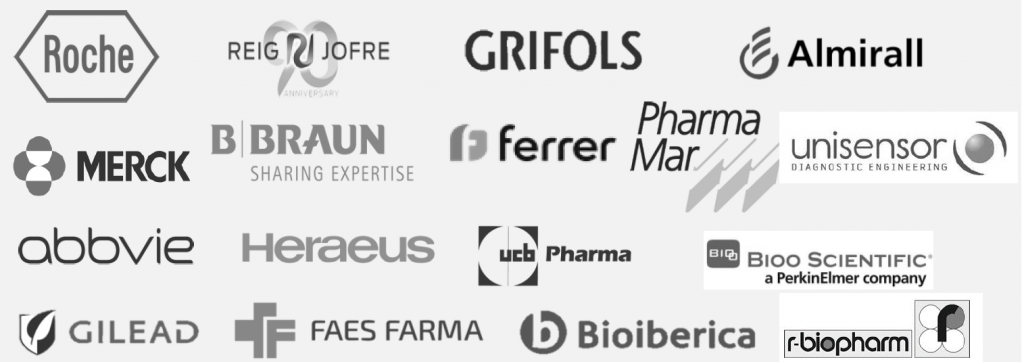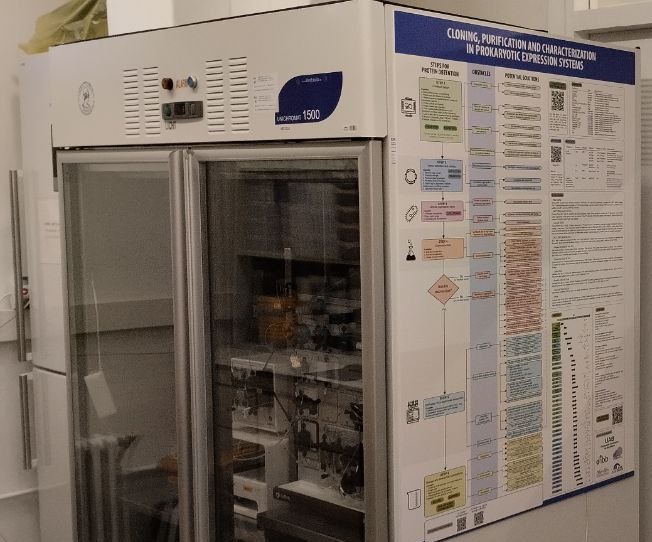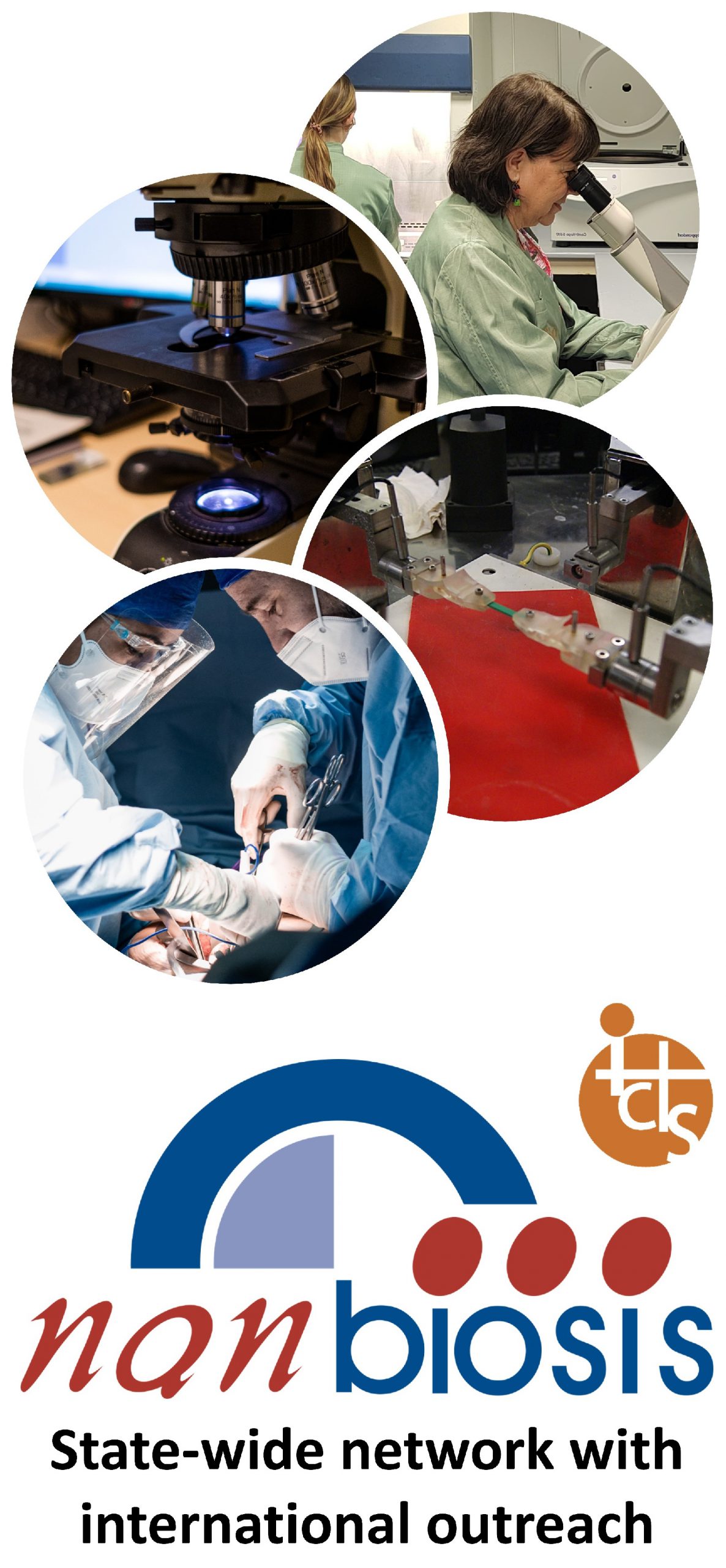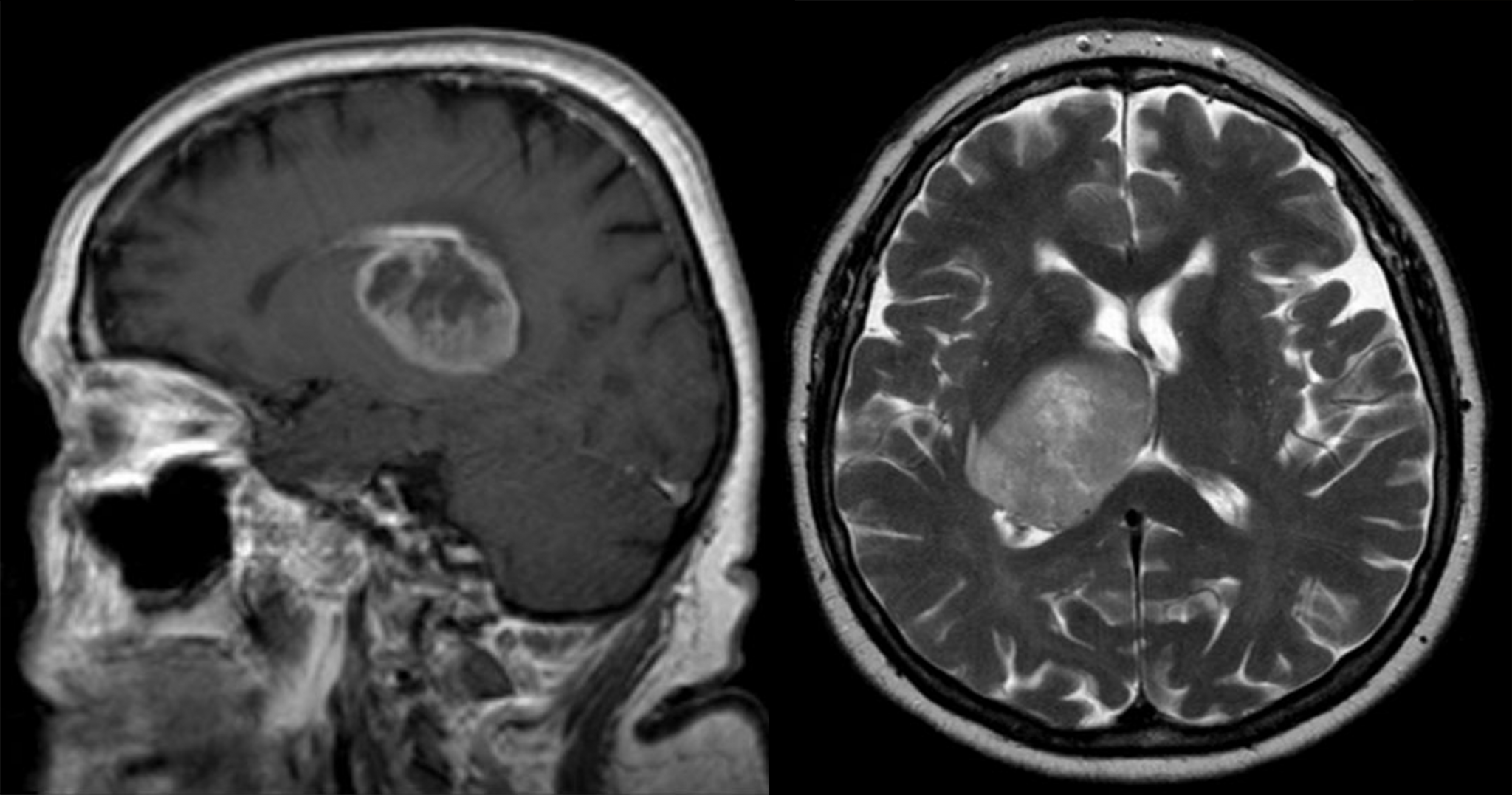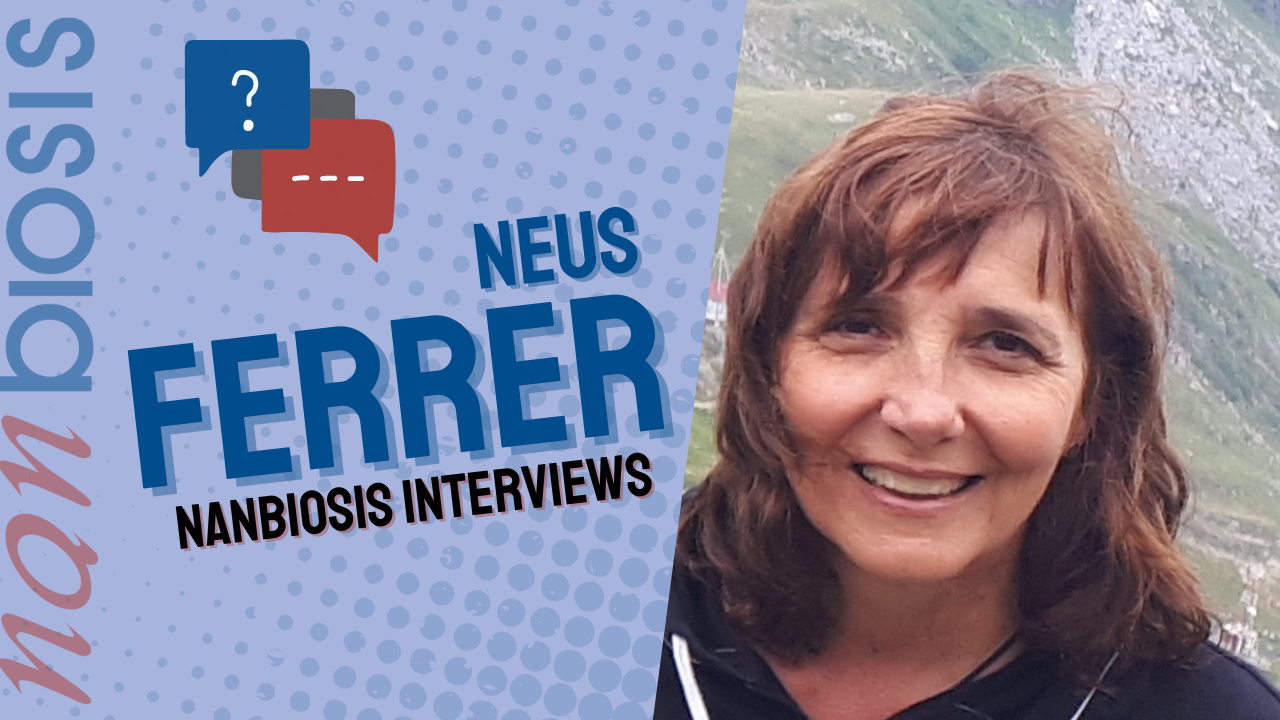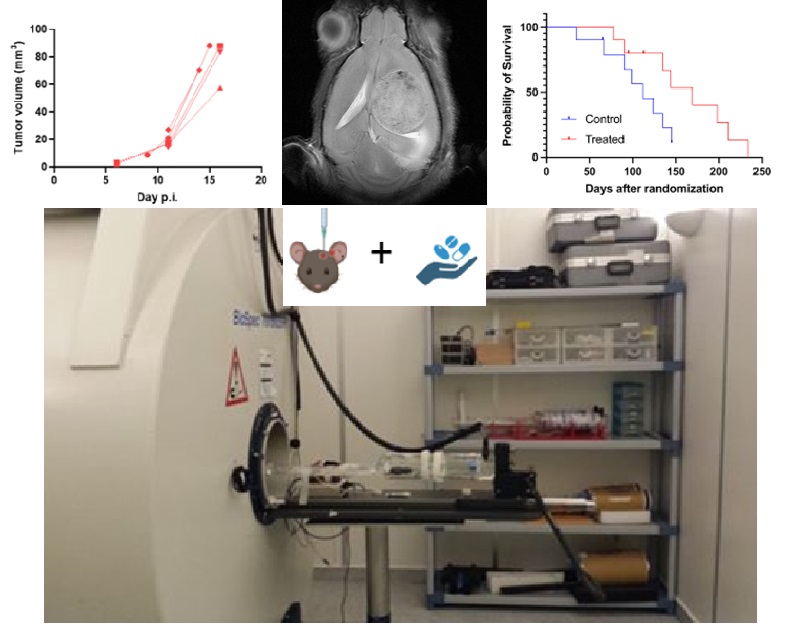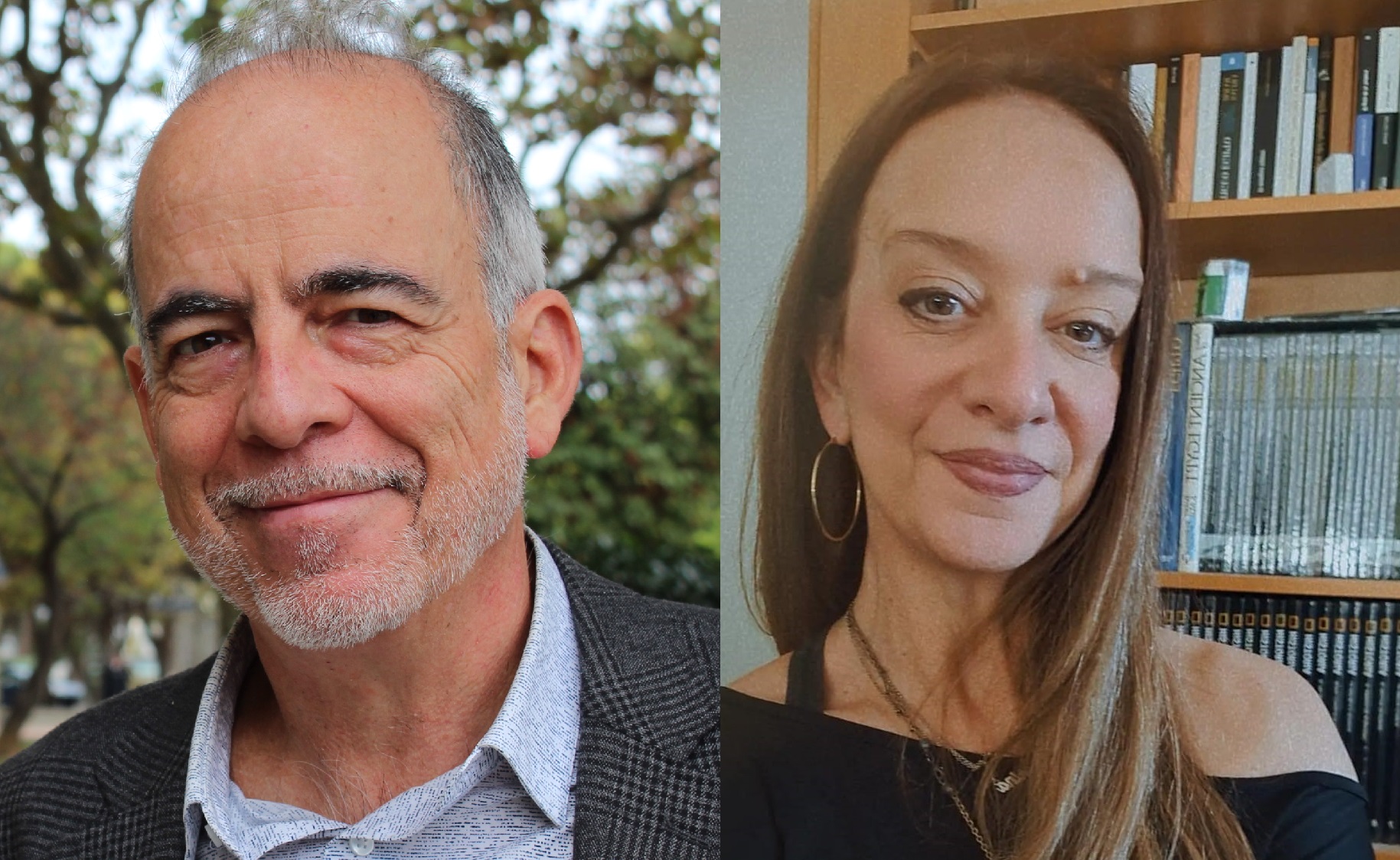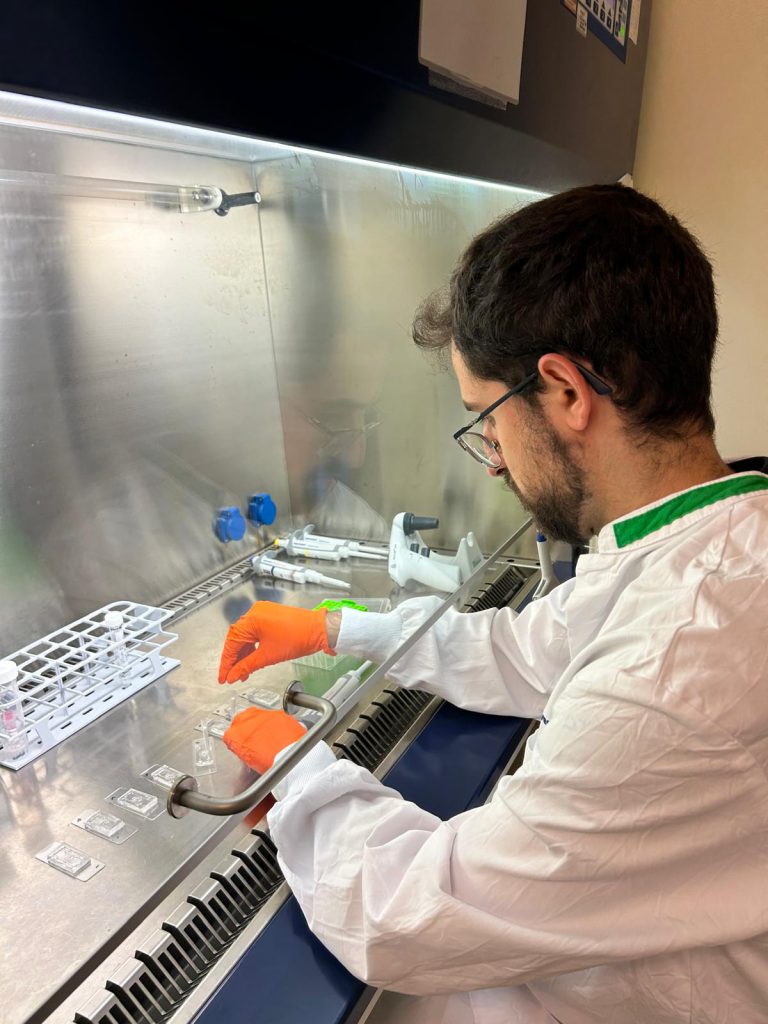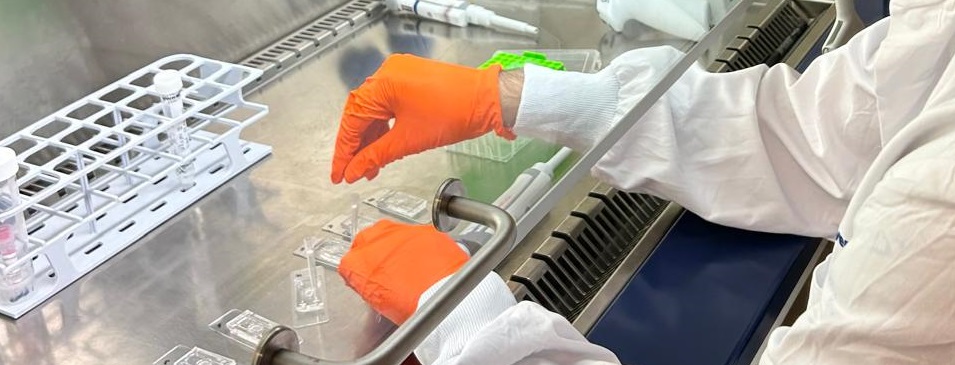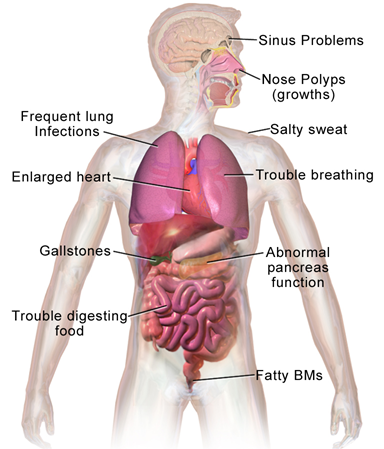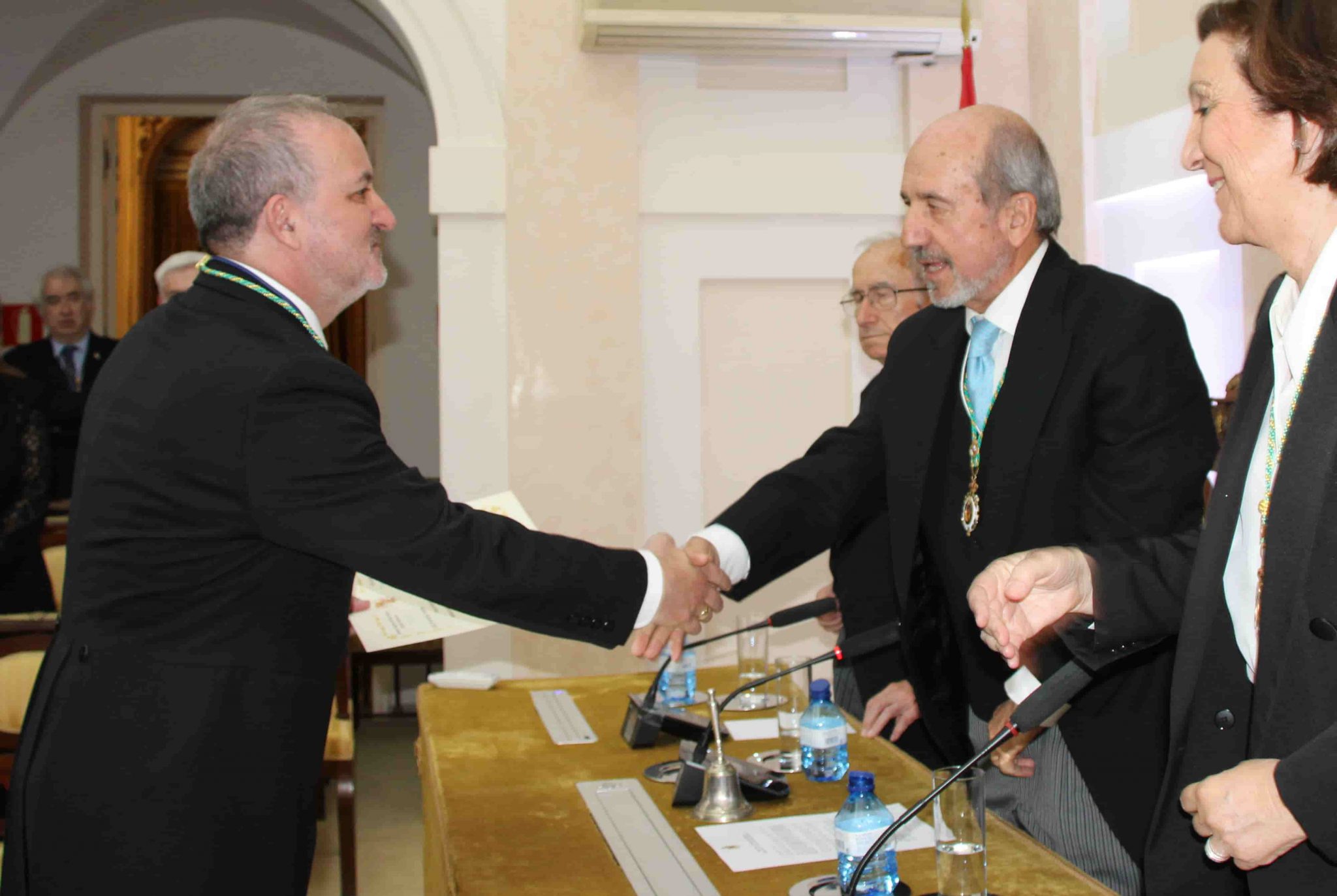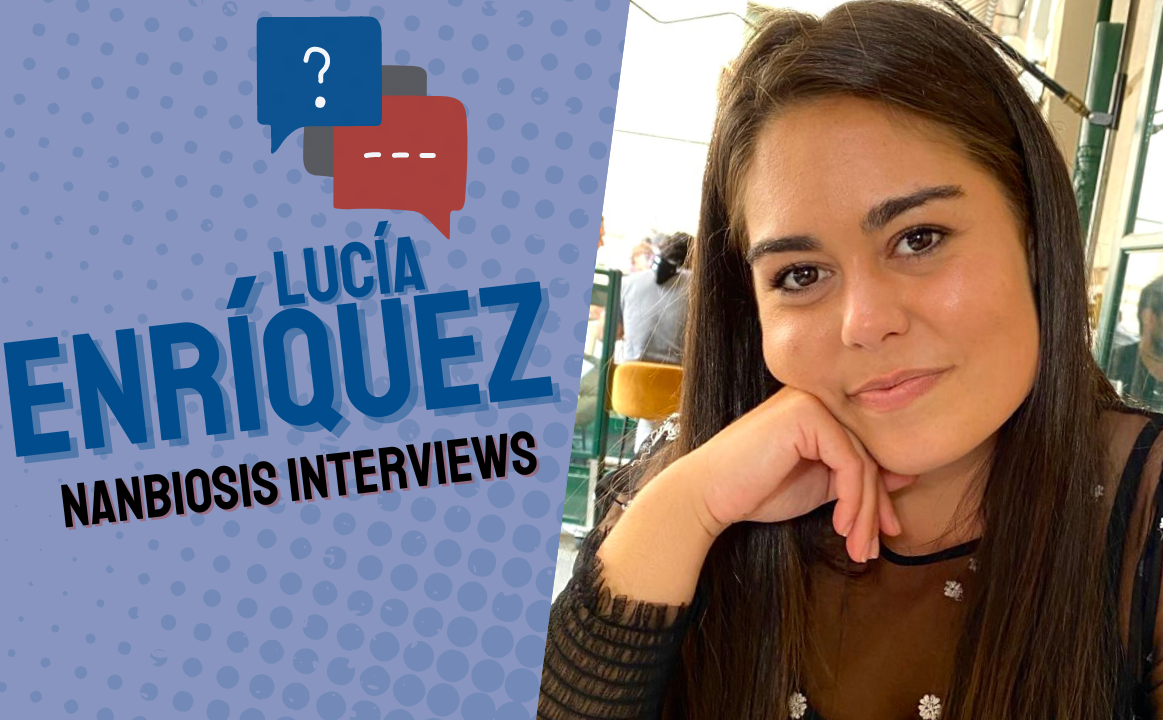Knowdlege growth: A chart-guide for cloning, production, purification, and characterization of recombinant proteins from prokaryotic systems
The Nanobiotechnology Group and NANBIOSIS PPP have created a poster-guide for recombinant protein cloning, production, and purification in prokaryotic systems.
Barcelona, october 2024. The Nanobiotechnology Group, led by Prof. Villaverde, in collaboration with the NANBIOSIS Unit 1, Protein Production Platform (PPP), directed by Dr. Ferrer-Miralles, has created an in-depth guide in the form of a poster that compiles key strategies for cloning, production, purification, and characterization of recombinant proteins expressed in prokaryotic systems.
Drawing from their vast experience in the field, they have meticulously outlined techniques and best practices to address common challenges and optimize every stage of the process. The poster covers various aspects of recombinant protein workflow, including selecting the right expression vectors, optimizing culture conditions, purification strategies, and the essential steps for characterizing the final purified protein.
The poster is displayed at the PPP facilities for easy consultation by anyone interested and is also available in the platform website to provide wider support to scientists in overcoming common challenges in the recombinant protein field.
The development of this poster reflects the collective expertise of the Nanobiotechnology Group and PPP in the field of recombinant proteins, gained through years of hands-on research.
The development of this poster reflects the collective expertise of the Nanobiotechnology Group and PPP in the field of recombinant proteins, gained through years of hands-on research. Understanding the critical role that recombinant proteins play in fields ranging from drug development to bioengineering they aim to equip researchers with the tools they have found useful for troubleshooting challenges in recombinant protein production.
The doors of the PPP are always open to provide guidance and technical support, if necessary, to the entire scientific community in the successful isolation of highly pure, soluble, stable, and active recombinant proteins, not only in procaryotic expression systems, but also using mammalian and insect cells.
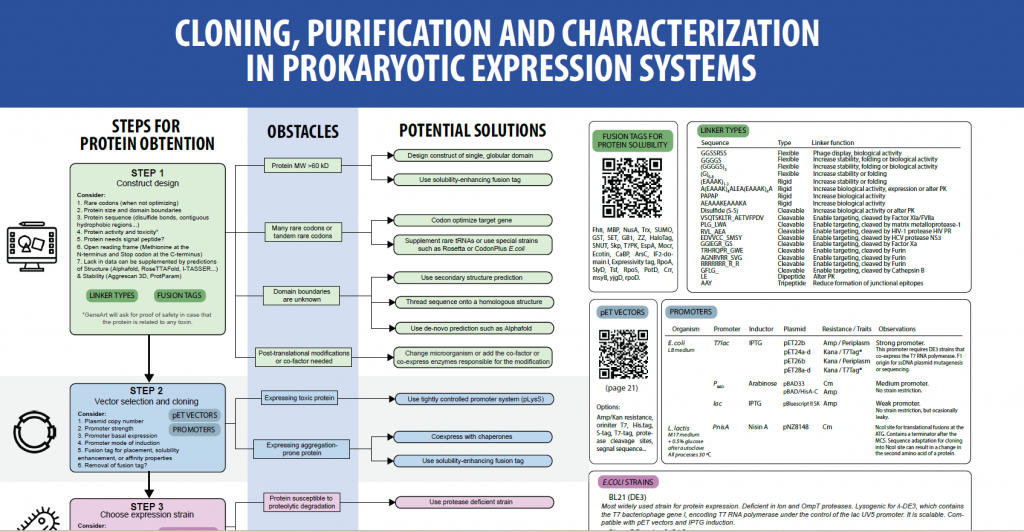
Download full guide in PDF (free of charge)
What is NANBIOSIS?
The goal of NANBIOSIS is to provide comprehensive and integrated advanced solutions for companies and research institutions in biomedical applications. All of this is done through a single-entry point, involving the design and production of biomaterials, nanomaterials, and their nanoconjugates. This includes their characterization from physical-chemical, functional, toxicological, and biological perspectives (preclinical validation).
In order to access our Cutting-Edge Biomedical Solutions with priority access, enter our Competitive Call here.
NANBIOSIS has worked with pharmaceutical companies of all sizes in the areas of drug delivery, biomaterials and regenerative medicine. Here are a few of them:
